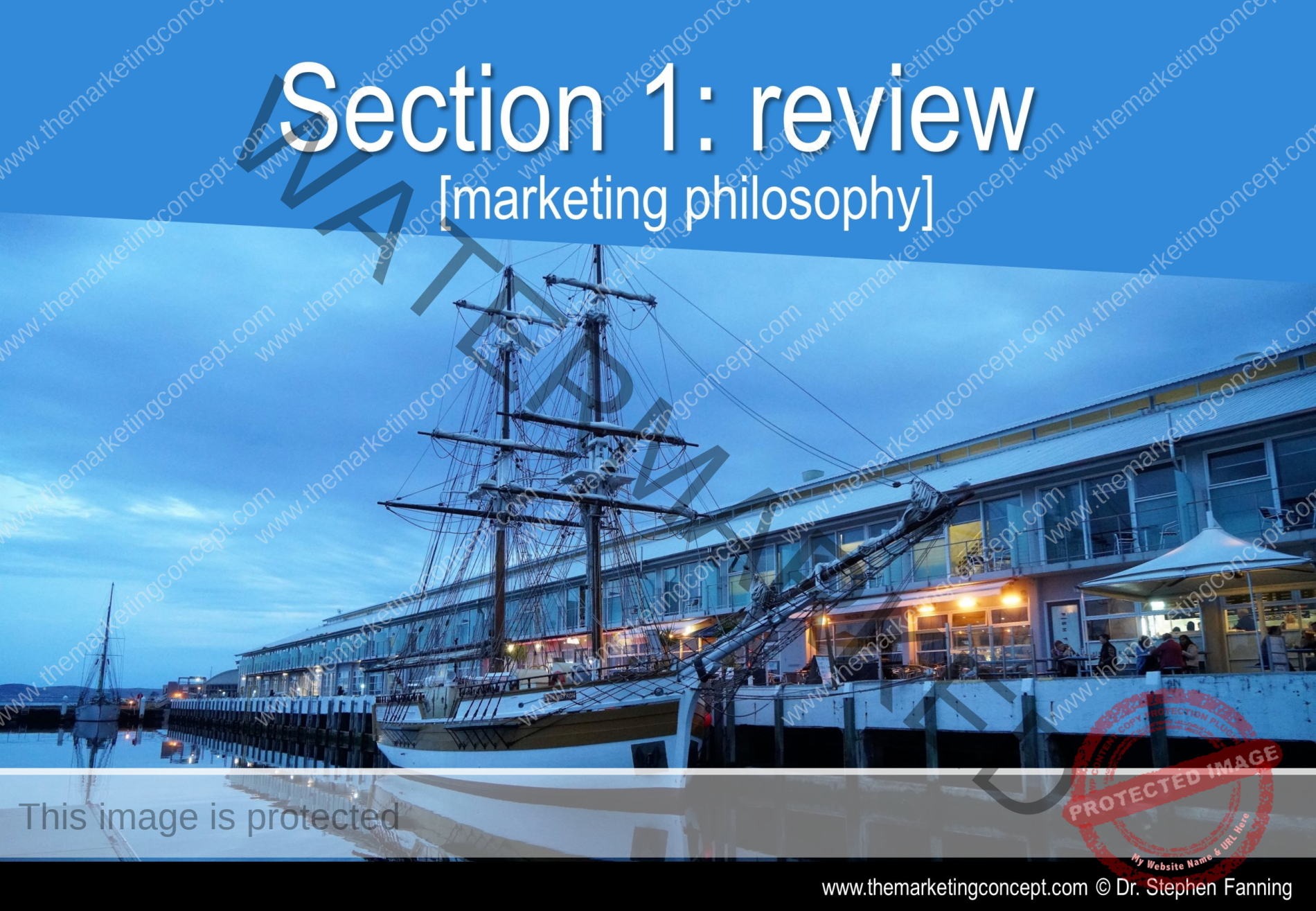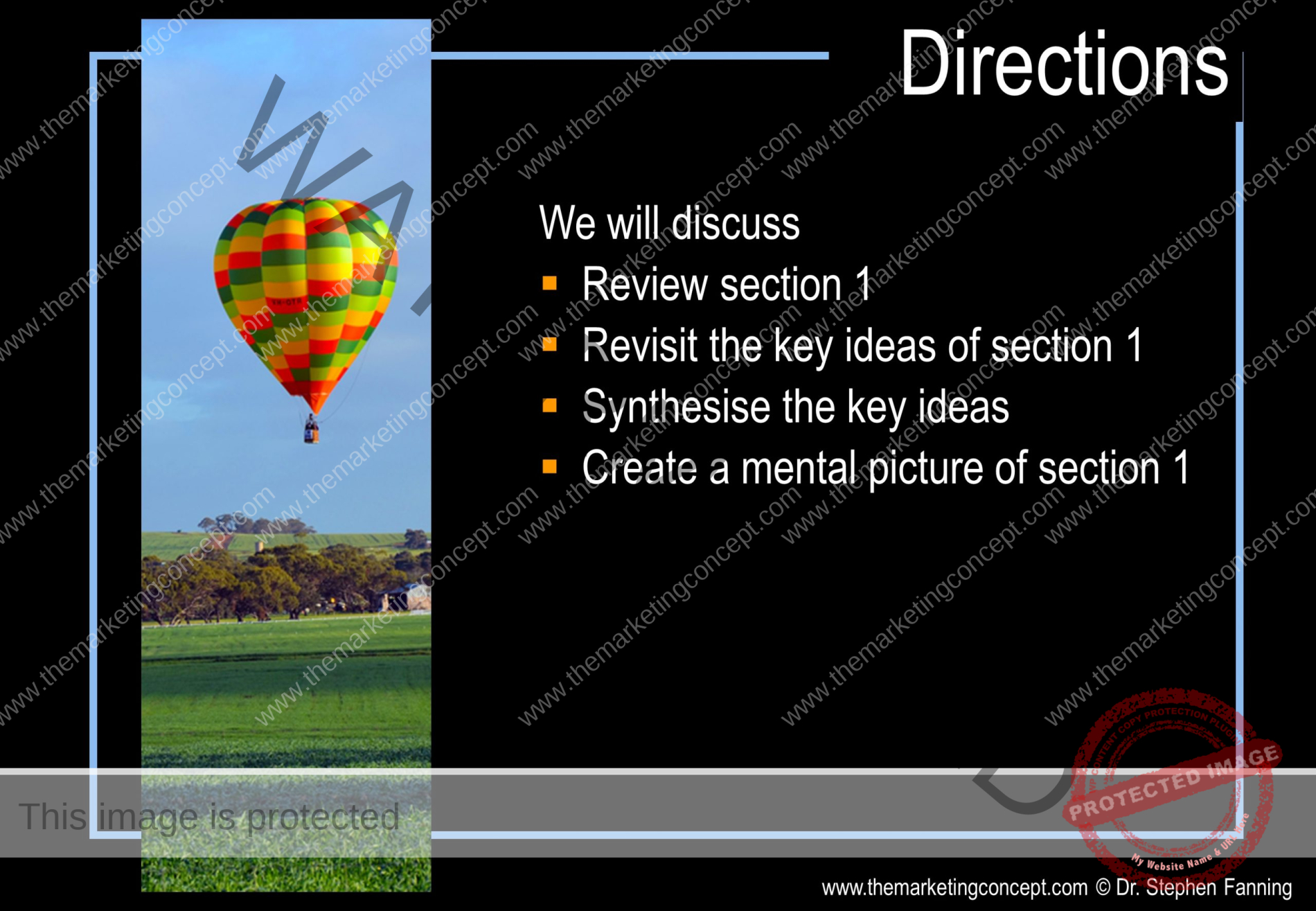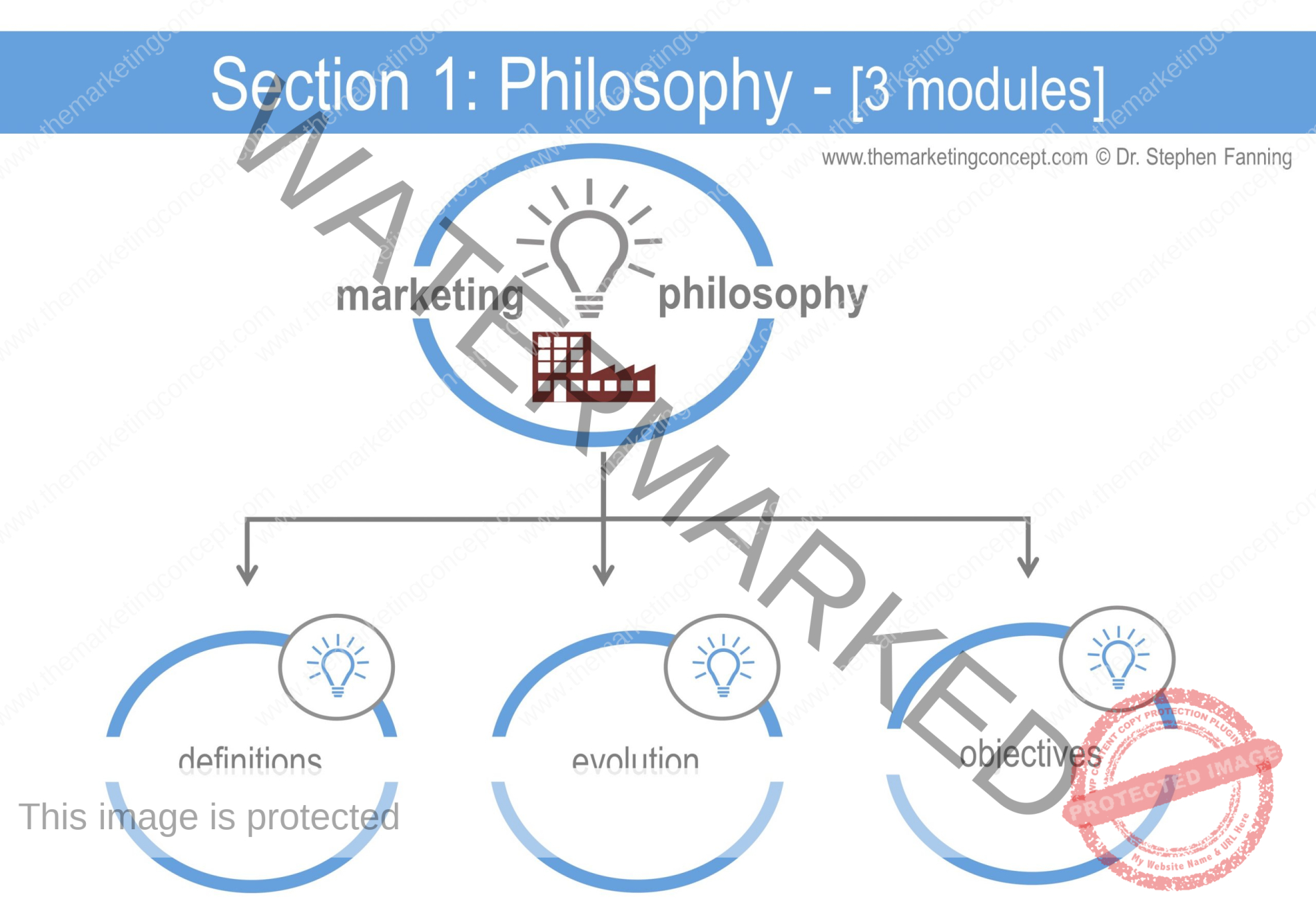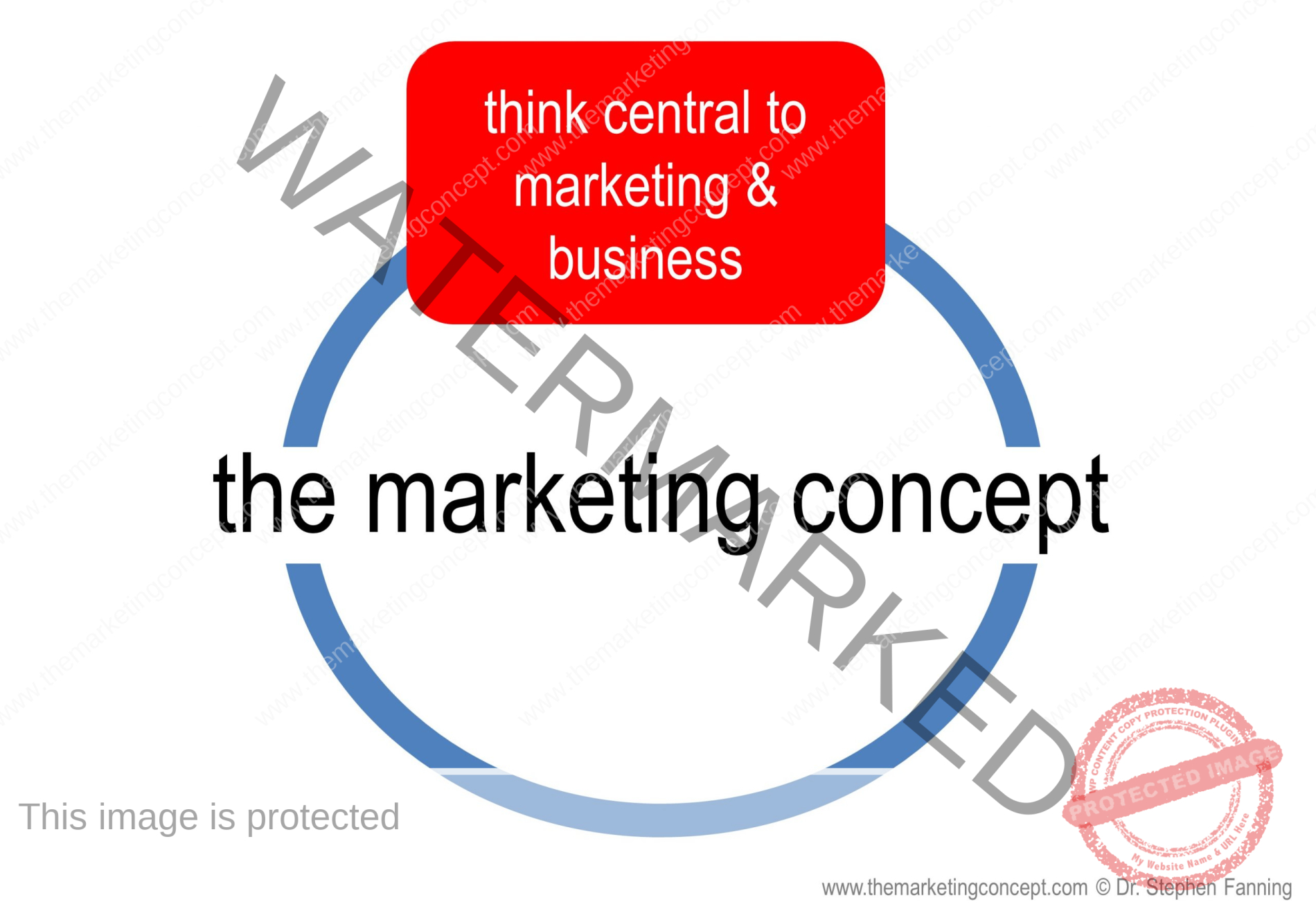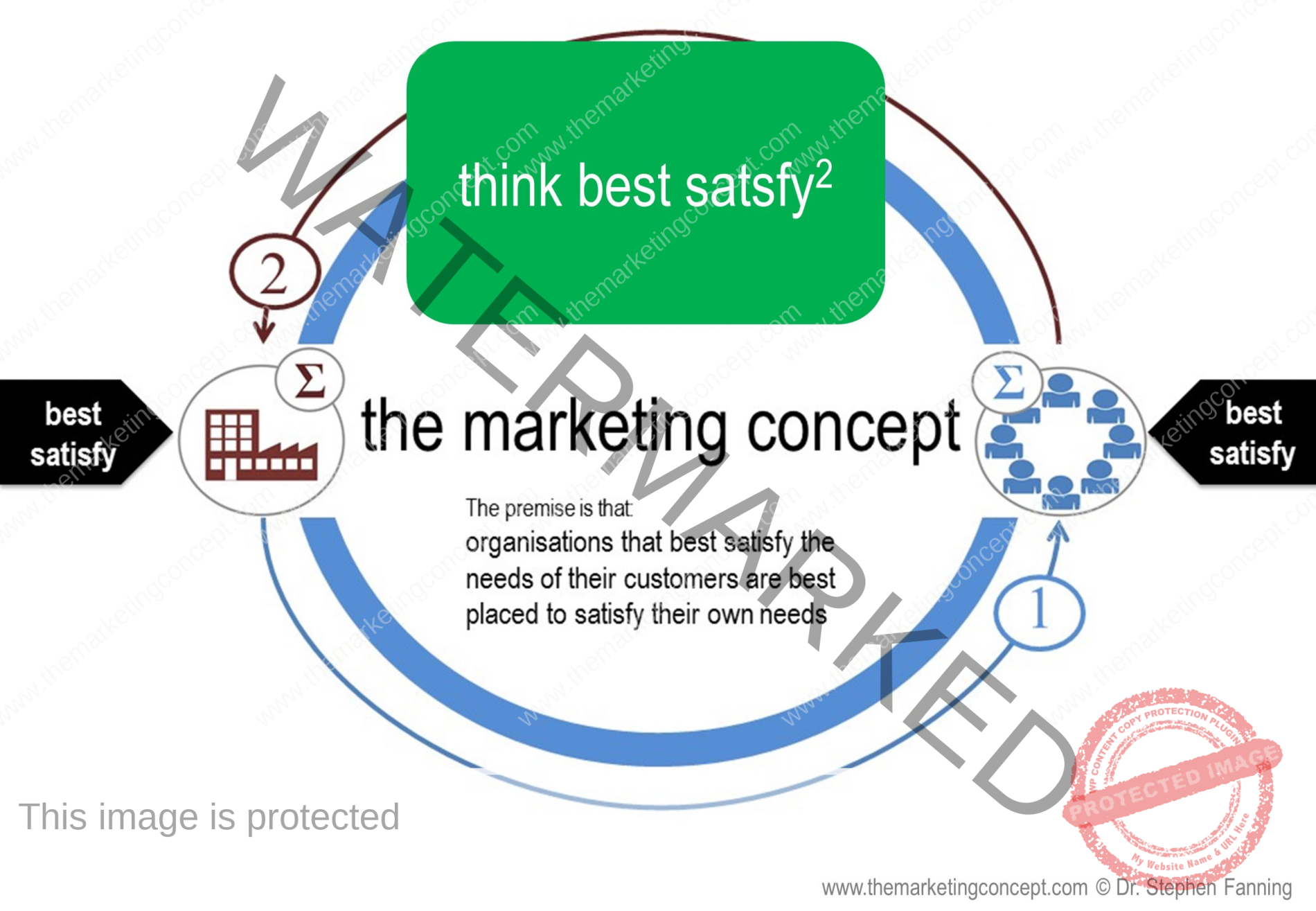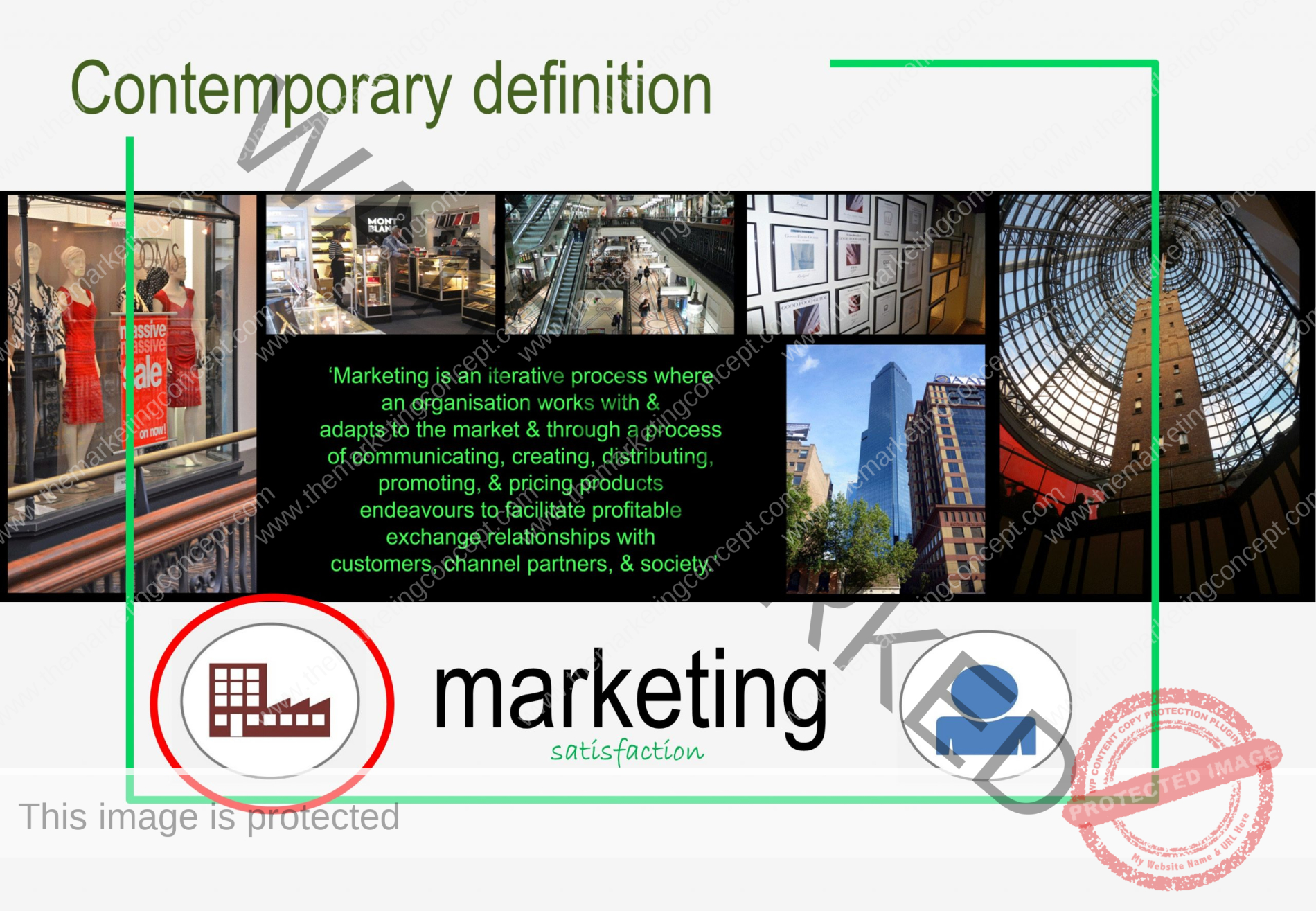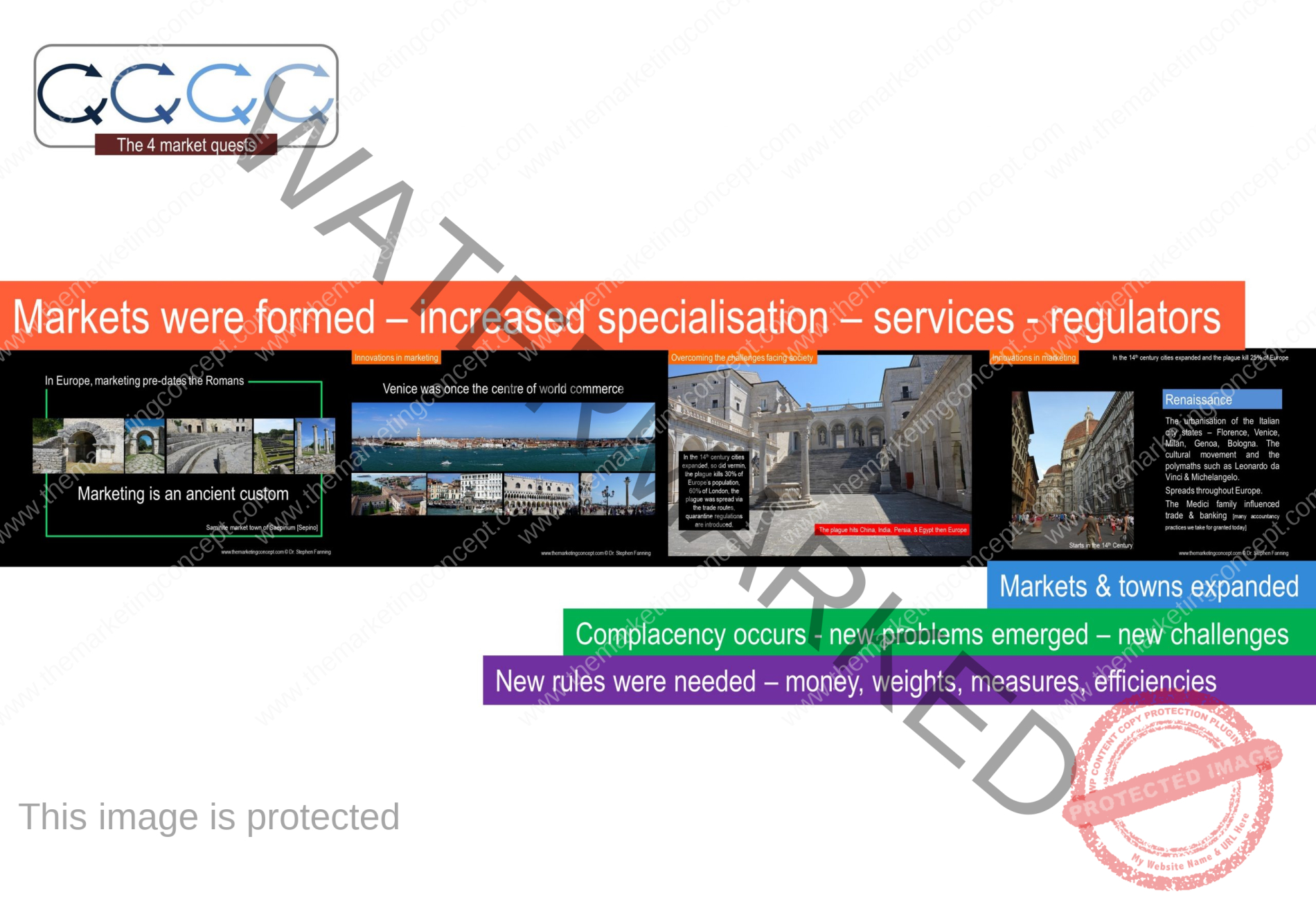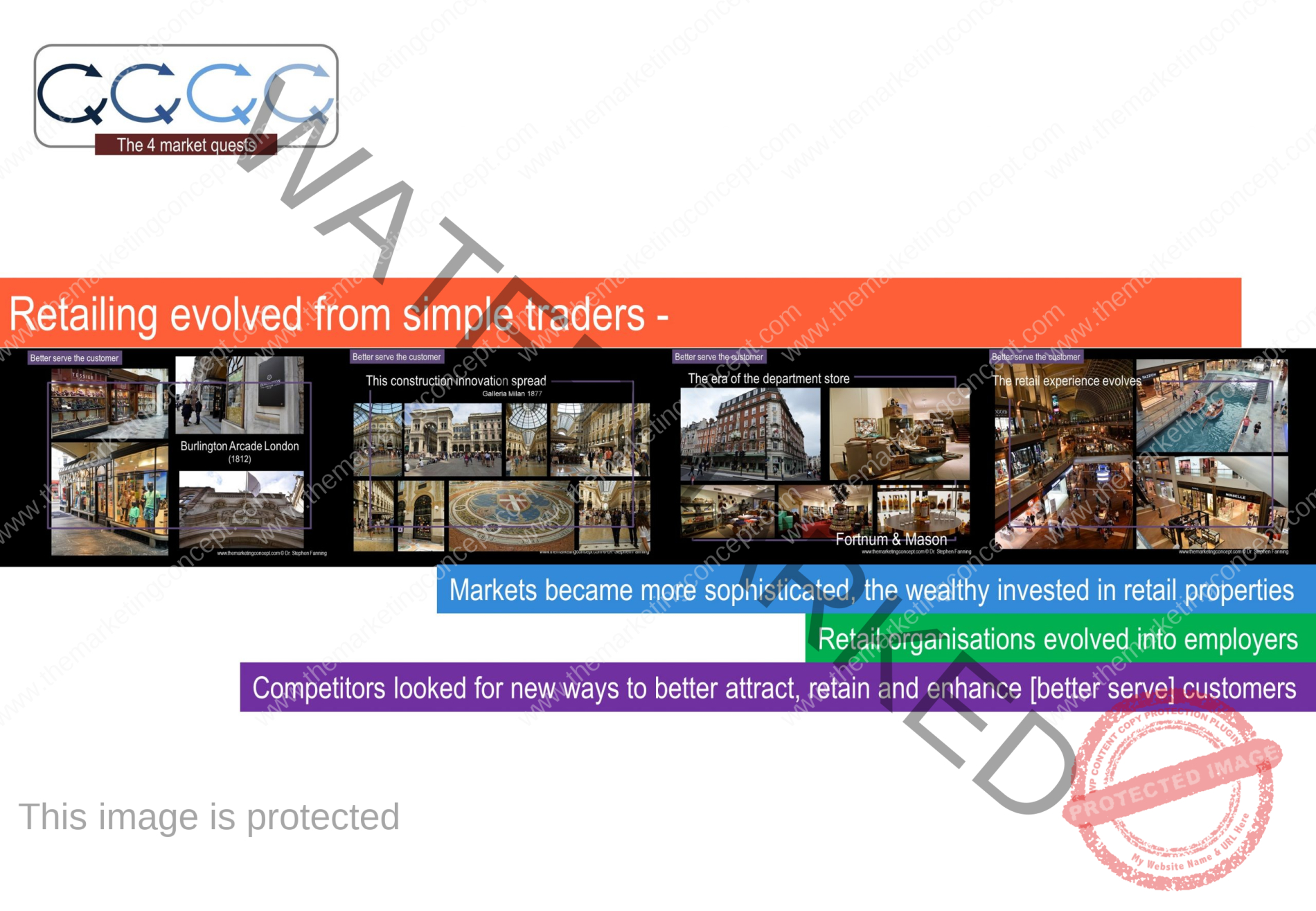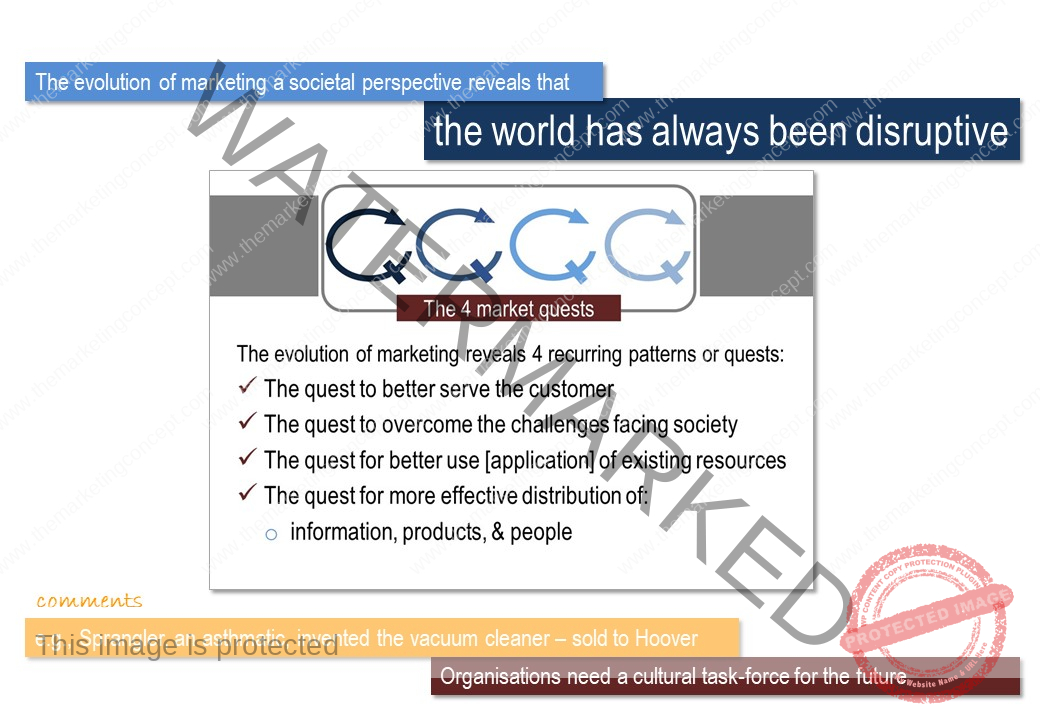

Section 1 in one slide
If we synthesise section 1 into one slide it looks like above. Study this slide and it will become a useful reference. The starting point is for an organisation to recognise and adopt the marketing concept. Ten craft and communicate a marketing philosophy which articulates and provides guidance to employees about how an organisation behaves towards their customers and in the marketplace. The marketing philosophy is influenced by the prevailing situational factors, however, the marketing philosophy is also adjusted to manage the changing situational factors. At all times the financial, strategic, and communication objectives are the key considerations, however, it is also noted that to achieve all 9 objectives then organisations should strive to achieve profitable exchange relationships and best satisfaction for both the customer and the organisation.
